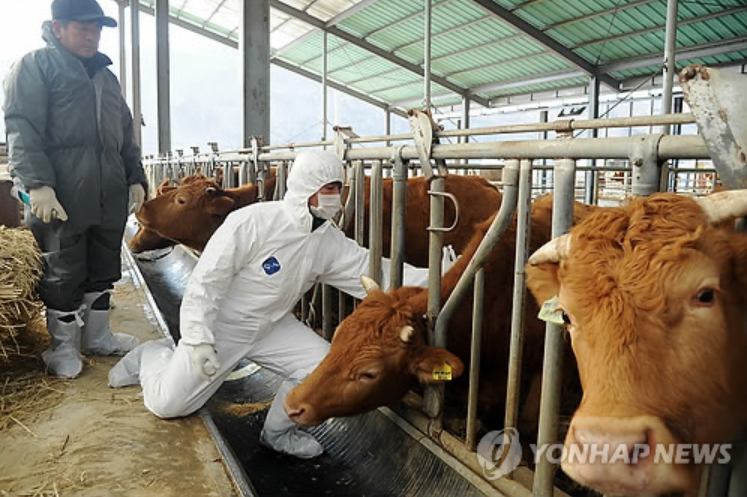
This was the fourth confirmed FMD case in a cow in South Korea since December last year. Two of the cases were reported in Icheon. (photo courtesy of Yonhap)
SEOUL, Feb. 7 (Korea Bizwire) – Three more cases of foot-and-mouth (FMD) disease have been confirmed in South Korea, raising worries that the animal disease keeps spreading in the country, government officials said Saturday.
One FMD case was confirmed at a cow farm in Icheon, 80 kilometers west of Seoul, said the officials from the Ministry of Agriculture, Food and Rural Affairs.
The farm is located about 2.1 kilometers from a pig farm where an FMD case was confirmed last month, they said.
This was the fourth confirmed FMD case in a cow in South Korea since December last year. Two of the cases were reported in Icheon.
The ministry also said that it has confirmed two more FMD cases at pig farms in Cheonan and Hongseong, both in South Chungcheong province.
The additional FMD cases added to worries that the animal disease that affects cloven-hoofed animals such as cows, sheep and deer especially is spreading in South Korea ahead of the Lunar New Holiday in mid-February when population movement is expected to spike.
Foot-and-mouth disease or hoof-and-mouth disease (Aphthae epizooticae) is an infectious and sometimes fatal viral disease that affects cloven-hoofed animals, including domestic and wild bovids. The virus causes a high fever for two or three days, followed by blisters inside the mouth and on the feet that may rupture and cause lameness.
Foot-and-mouth disease (FMD) has severe implications for animal farming, since it is highly infectious and can be spread by infected animals through aerosols, through contact with contaminated farming equipment, vehicles, clothing, or feed, and by domestic and wild predators. Susceptible animals include cattle, water buffalo, sheep, goats, pigs, antelope, deer, and bison. It has also been known to infect hedgehogs and elephants; llamas and alpacas may develop mild symptoms, but are resistant to the disease and do not pass it on to others of the same species. (Wikipedia)






